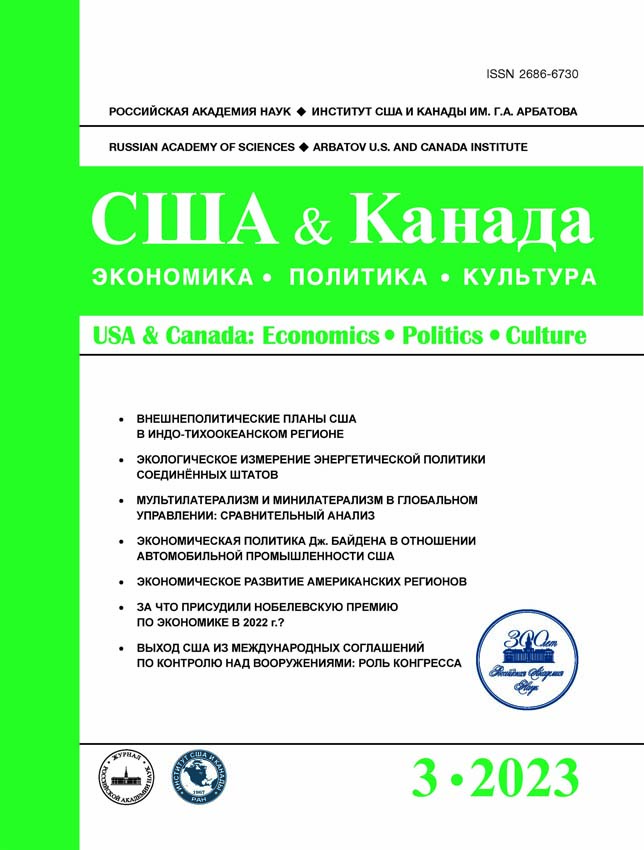The Indo-Pacific in US foreign policy planning
- Авторлар: Boldyrev V.E.1
-
Мекемелер:
- Institute of History, Archeology and Ethnography of Peoples of Far East, Far Eastern Branch of Russian Academy of Sciences
- Шығарылым: № 3 (2023)
- Беттер: 47-62
- Бөлім: Globalization
- URL: https://innoscience.ru/2686-6730/article/view/662208
- DOI: https://doi.org/10.31857/S2686673023030045
- EDN: https://elibrary.ru/HAUWAI
- ID: 662208
Дәйексөз келтіру
Аннотация
The paper is devoted to reconstruction of Joseph Biden’s Indo-Pacific policy planning based on official documents. The region is understood as an objectively forming space based on factors independent of human interpretation. It is revealed that the US government doesn’t consider this space as common and aims to divide it into subregions according to its political interests. The US government introduces a four-element structure of the region, which has a purpose to contain both opponents (China, Russia, DPRK) and allies and partners. Also, it strives to adjust the regional architecture as a network of partnerships oriented towards the USA.
Негізгі сөздер
Авторлар туралы
Vitalii Boldyrev
Institute of History, Archeology and Ethnography of Peoples of Far East, Far Eastern Branch of Russian Academy of Sciences
Email: boldyrev89@list.ru
Vladivostok, Russian Federation
Әдебиет тізімі
- Banerjee S. 2020. US Retrenchment on Stability of the Gulf Region. Journal of Asian Economic Integration. Vol. 2. No. 2. P. 221-239. doi: 10.1177/2631684620940478
- Friedman J.A. 2022. Is US grand strategy dead? The political foundations of deep engagement after Donald Trump.International Affairs. Vol. 98. No. 4. P. 1289-1305. doi: 10.1093/ia/iiac112
- Halperin M., Clapp P. 2006. Bureaucratic Politics and Foreign Policy. Washington D.C.: The Brookings Institution. 400 p.
- Mann J. 2012. The Obamians. The Struggle Inside the White House to Redefine American Power. New York: Penguin Books. 392 p.
- Nye J.S., Jr. 2022. How no to deal with a rising China: A US perspective.International Affairs. Vol. 98. No. 5. P. 1635-1651. doi: 10.1093/ia/iiac117
- Vijayalakshmi K.P. 2018. India - U.S. Strategic Partnership: Shifting American Perspectives on Engaging India.International Studies. Vol. 54. No. 1-4. P. 42-61. doi: 10.1177/0020881718791403
Қосымша файлдар









